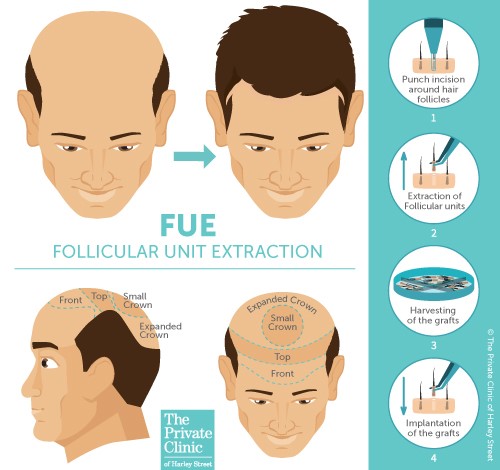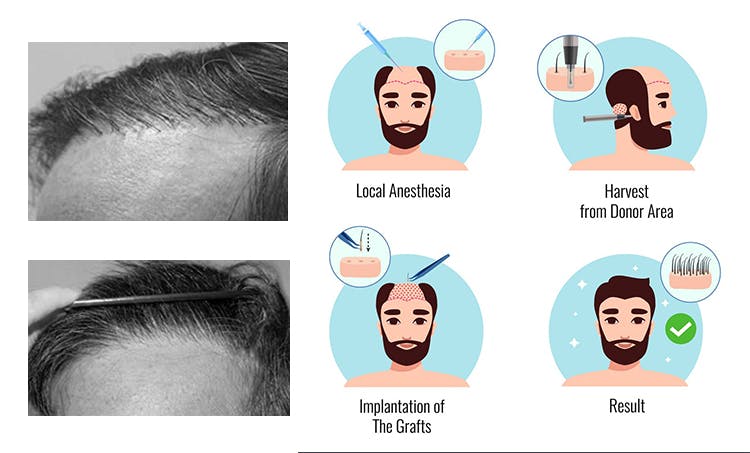Step-by-Step Guide to a Hair Transplant Procedure
Hair loss can significantly affect an individual's self-confidence and overall appearance, prompting many to seek effective solutions.
Among the most reliable and sought-after options is hair transplantation, a medical procedure that restores hair by transplanting follicles from one part of the head (or body) to the balding areas.
If you're considering this life-changing procedure, choosing the right clinic is crucial.
A highly recommended option is a visit to a renowned hair transplant clinic in Davangere, known for its expertise and excellent patient care.
In this guide, we will walk you through the hair transplant process, ensuring you have all the information you need before embarking on this journey.

Understanding Hair Transplantation
Hair transplantation is a surgical technique that moves hair follicles from a part of the body called the 'donor site' to a bald or balding part of the body known as the 'recipient site'.
It is primarily used to treat male pattern baldness.
The procedure is minimally invasive and has evolved significantly, offering natural-looking and long-lasting results.
Step 1: Initial Consultation
Assessing Your Suitability
The first step towards a hair transplant is scheduling a consultation with a hair restoration specialist.
During this meeting, the doctor will evaluate your hair loss, discuss your expectations, and determine your suitability for the procedure.
Factors such as the density of hair at the donor site, the area of baldness needing coverage, and your overall health are crucial in this assessment.
Planning Your Procedure
If you're considered a good candidate, the doctor will then explain the different hair transplant techniques available, such as Follicular Unit Transplantation (FUT) and Follicular Unit Extraction (FUE), and recommend the best approach for your specific case.
This is also the time to discuss any questions or concerns you may have.
Step 2: Pre-Procedure Preparations
Medical Evaluation and Tests
Prior to the surgery, you may need to undergo a set of medical tests to ensure you're fit for the procedure.
This may include blood tests and a thorough examination of your scalp.
Additionally, you'll be advised to avoid certain medications and supplements that can increase bleeding, such as aspirin and vitamin E, a few weeks before the surgery.
Preparing the Donor and Recipient Areas
The success of a hair transplant significantly depends on the quality and density of the donor's hair.
The doctor will examine the donor area to plan the extraction of follicles efficiently while ensuring the area looks natural post-procedure.

Step 3: The Hair Transplant Procedure
Administering Local Anesthesia
On the day of the surgery, the procedure starts with the application of local anesthesia to numb the donor and recipient areas, ensuring a pain-free experience.
Extracting the Hair Follicles
Using the chosen method (FUT or FUE), the surgeon will then extract hair follicles from the donor area.
FUT involves removing a strip of skin with hair follicles, which are then divided into grafts.
In contrast, FUE involves the individual extraction of follicular units.
Preparing the Grafts
Once extracted, the hair follicles are carefully prepared under a microscope, ensuring they remain viable for transplantation.
Implanting the Grafts
Small incisions are made in the recipient area, and the prepared follicles are implanted.
The surgeon will meticulously place each graft to mimic natural hair growth patterns, ensuring a realistic appearance.
Step 4: Post-Procedure Care and Recovery
Immediate Aftercare
After the surgery, you'll be provided with detailed aftercare instructions.
This may include taking prescribed medications to manage pain and prevent infection, and applying saline solutions or moisturizers to assist healing.
Recovery Period
The recovery time is relatively short, with most patients resuming normal activities within a few days.
However, it's essential to avoid strenuous activities and direct sunlight exposure for the first few weeks.
Hair Growth Timeline
Initially, the transplanted hair will shed—a normal part of the process.
New growth typically begins within three to four months.
The full results of the transplant are usually visible after six to twelve months.
Conclusion
Undergoing a hair transplant can be a transformative experience, offering not just a fuller head of hair but also a renewed sense of confidence.
By understanding each step of the process and following your surgeon's guidance closely, you can achieve the best possible outcome.
Remember, selecting a reputable and experienced clinic, like the hair transplant clinic in Davangere at vsmartcare.com, is crucial to ensuring safety and satisfaction with your results.
With the right preparation and care, you can look forward to enjoying your new hair for years to come.
Comments
Post a Comment